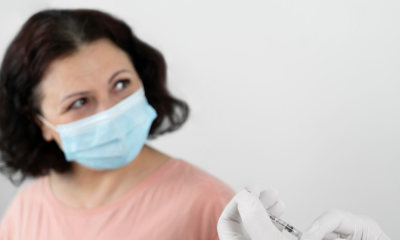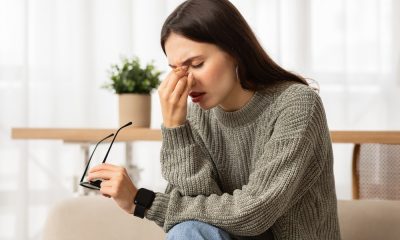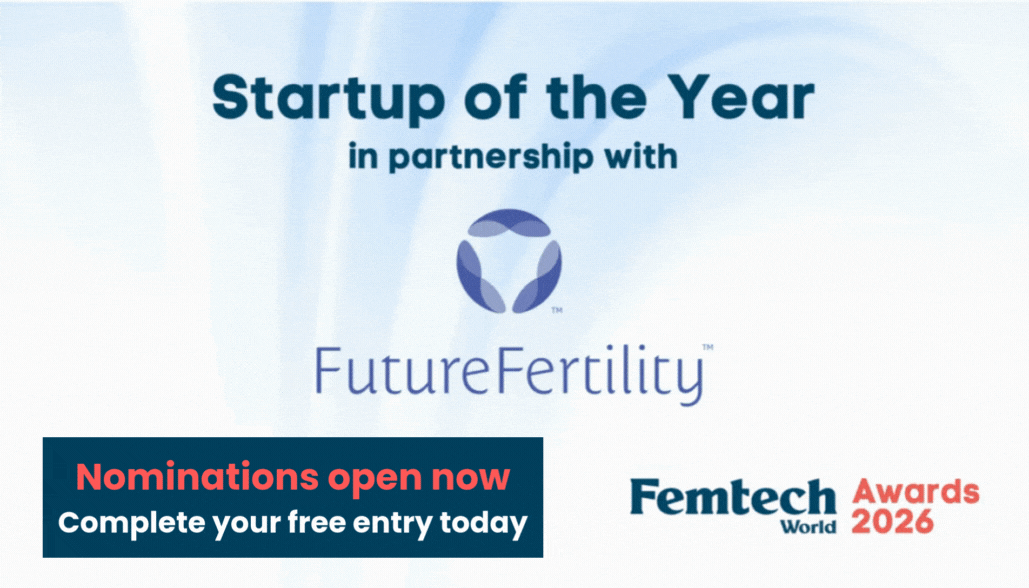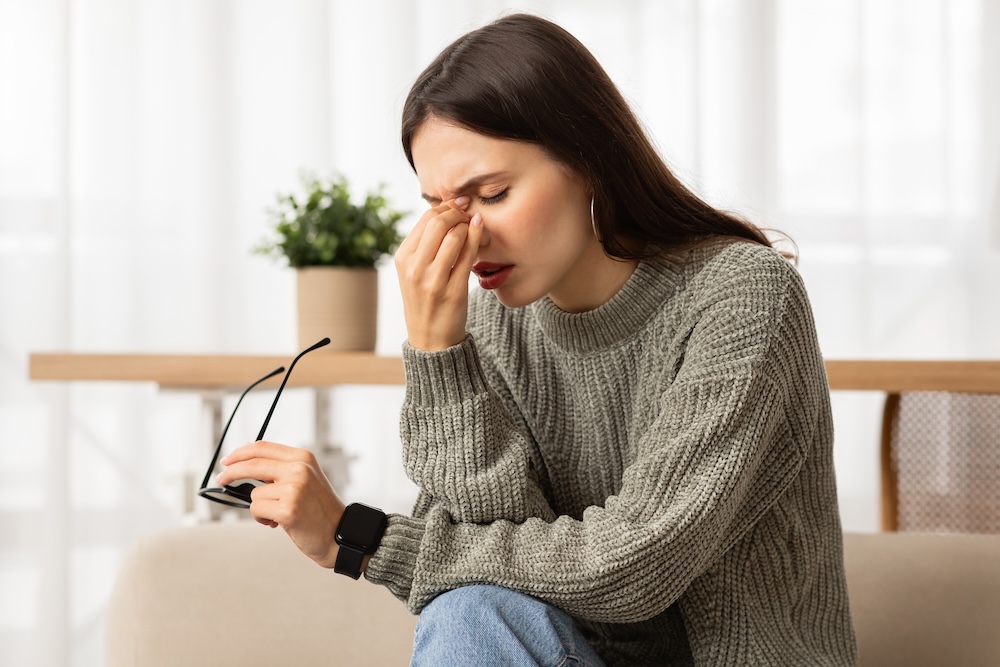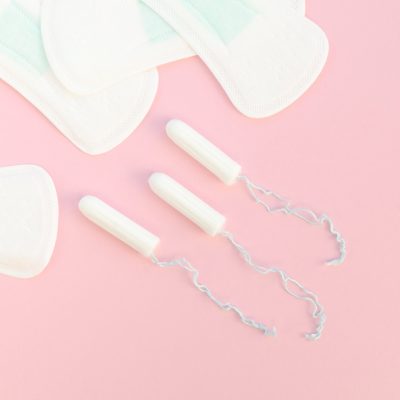News
The Future of femtech: Rebuilding the investment landscape

By Melissa Wallace, co-founder, Fierce Foundry
For decades, women’s health was treated as an afterthought, underfunded, under-researched, and often dismissed as “niche.”
Yet the irony is staggering: women make up 51 per cent of the population and drive nearly 80 per cent of consumer purchasing decisions.
The gap is rarely about market potential, because we know it is huge! It comes down to who holds the capital, who sets the governance, and whose lived experiences shape investment decisions.
Many of us see this as an opportunity, and now a growing wave of organisations are working to rebuild the investment landscape with women at the centre. Fierce Foundry, How Women Invest, The Fourth Effect, Female Founders Fund, All Raise, and countless grassroots angel networks are proving that women at the table means change.
The organisations are creating new pathways for women to become investors, supporting founders with more transparent funding relationships, and shifting the narrative on what it means to scale a business.
THIS is what is laying the foundation for the next generation of femtech innovation.
More Women Investors Changes Everything
People invest in what they understand and relate to.
When a woman develops a breakthrough medical device for PCOS patients, a male investor may not immediately recognise its value, even if the numbers are strong.
That’s not about blame, it’s about perspective.
When women step into investment roles, the impact is measurable:
Backing overlooked markets.
Female investors have been early champions of companies once ignored by traditional VCs.
Female Founders Fund backed Maven Clinic when “women’s health” wasn’t on Sand Hill Road’s radar.
Elvie, a pioneer in connected breast pumps and pelvic floor trainers, scaled globally because women investors recognised the scale of the problem and the purchasing power of women.
Without women at the table, these companies may have never broken through.
Bringing a wider lens of critical thinking.
Women tend to evaluate opportunities across multiple dimensions: returns, customer well-being, and long-term sustainability.
This broader perspective surfaces both risks and opportunities that can otherwise be missed. It’s not “soft” thinking; it’s smart investing.

Melissa Wallace
Delivering results through leadership.
Data shows that women-led companies outperform their leadership counterparts.
A BCG study found startups founded and co-founded by women generate 10 per cent more cumulative revenue over a five-year period, despite raising less capital.
Women investors see that performance potential early and help accelerate it.
This isn’t about charity. It’s about smarter bets and the numbers back it up.
The Blueprint for Change
The question isn’t whether FemTech will thrive. It’s what needs to shift for it to thrive faster. From my perspective, three things are critical:
- Pathways for Women to Become Investors. We need more women with capital, and that means more exits for women founders, broader education on accredited investing, and new models that democratise access to wealth.
- A Redesign of Venture Structures. Traditional VC models were never built with women in mind. They reward hypergrowth at any cost, punish flexibility, and replicate outdated power dynamics. At Fierce Foundry, we’re experimenting with venture studio models that align with how women actually lead; embedding shared services, designing with empathy, and even considering how work cycles could align with women’s hormonal cycles for exceptional performance.
- A Culture of Networks, Not Gatekeepers. Fundraising is rarely about one pitch; it’s about the introductions that compound over time. By building “networks of networks,” grounded in transparency and reciprocity, we ensure women founders gain access to capital where it has historically been blocked.
Lessons From the Frontlines
For FemTech founders, the challenge isn’t just finding any investor, it’s finding the right investor.
The wrong money can derail a company just as quickly as no money.
The most successful women founders I know focus on three things:
- Invest in aligned capital. Before taking money, research who your investors are, what they’ve funded, and how they show up for founders. The best partnerships are 10-year marriages, you need conviction on both sides.
- Build with transparency. Women founders are often asked tougher questions, but the best defense is clarity. Own your numbers, your risks, and your strategy. The right investors will respect honesty over spin.
- Leverage networks strategically. Don’t just network for introductions, network for champions. Each “no” can lead to two or three more conversations if you leave the door open. The founders who excel are the ones who convert networks into ecosystems of support.
At Fierce Foundry, I’ve seen this firsthand.
The women we work with not only find capital, but they also attract investors who believe in them as much as in the product.
That’s when the flywheel starts: funded women lead to exits, which lead to new women investors, which fuels the next generation of founders.
A Future Worth Building
If the investment landscape reached true gender balance, FemTech wouldn’t be a “category”, instead, it would simply be part of the mainstream.
We would see more women founders funded, more exits leading to more women investors, and workplaces redesigned to reflect how people actually thrive.
That future is not hypothetical.
I see glimpses of it every day at Fierce Foundry, where women are co-building companies with us from idea to exit.
The more we expand pathways for women investors, reimagine venture models, and build networks of networks, the faster we get there.
The next decade could be the tipping point for FemTech if we choose to rebuild the system with women at its core.
And when we do, the industry won’t just thrive. It will redefine what innovation looks like for everyone.
Diagnosis
Researchers develop nasal therapeutic HPV vaccine

Researchers have created a therapeutic HPV vaccine delivered through the nose that could offer a non-invasive treatment for cervical cancer.
Screening for HPV and preventive vaccines lower risk, but there are no approved therapies for existing HPV infections or HPV-linked cancers.
Current treatments include surgery, radiotherapy and chemotherapy.
Researchers from Chiba University, Japan, led by associate professor Rika Nakahashi-Ouchida and Ms Hiromi Mori of Chiba University Hospital, have developed an intranasal therapeutic option.
Unlike injectable vaccines, nasal vaccines trigger immunity at the mucosal surface — the protective lining of the upper airway.
This mucosal response can also protect distant sites, including the reproductive tract.
Building on earlier work showing nasal immunisation can elicit strong genital-tract responses against herpes simplex virus type 2, the team used cationic nano-sized hydrogel particles (cCHP nanogels) to deliver HPV antigens to nasal tissues.
These positively charged spheres adhere to the negatively charged nasal surface and slowly release antigens, which prompt an immune response.
Nakahashi-Ouchida said: “We have developed an intranasal therapeutic vaccine as a non-surgical alternative to conventional treatments that can compromise women’s quality of life.
“This novel nasal vaccine activates the mucosal homing pathways of lymphocytes, allowing it to trigger an immune response in the cervical mucosa, a site from the nasal administration.”
The formulation targets the E7 oncoprotein from HPV16, which inactivates pRb, a key tumour suppressor.
To strengthen responses, the researchers added cyclic-di-AMP, an adjuvant that boosts T-cell-mediated immunity so T cells can attack infected or cancerous cells.
The resulting cCHP-E7 + c-di-AMP showed what the researchers describe as strong anti-tumour activity in mice and macaques. In mouse models, it significantly slowed tumour growth versus controls.
In macaques, a nasal spray device (usable in humans) delivered four doses.
Vaccinated animals developed high levels of E7-specific helper and killer T cells producing molecules linked to tumour control; controls did not.
Immune activity was detected in cervical tissue, and E7-specific killer T cells persisted for at least four months, suggesting lasting defence.
According to the World Health Organization, cervical cancer caused an estimated 660,000 new cases and 350,000 deaths in 2022.
If proven safe and effective in humans, intranasal therapy could offer a non-invasive, fertility-preserving alternative to surgery for some patients.
The cCHP nanogel platform may also support nasal vaccines against other pathogens and wider clinical uses.
Nakahashi-Ouchida said: “Immunotherapies such as intranasal therapeutic vaccines may help establish a new category of non-invasive treatment.
“These approaches could be extended to recurrence prevention and chronic disease management, offering patients safer and more accessible options.”
Hormonal health
Study reveals why women more likely to get severe long Covid
Opinion
Swimming, periods and finding freedom in my body

By WUKA sports ambassador, Hannah Miley MBE 3x Olympian & Commonwealth champion
I started swimming when I was really young, I just loved being in the water.
The pool quickly became my second home, the place where I felt most like myself. I wasn’t a natural swimmer, but I loved to work hard, and racing gave me that outlet for my competitive side.
There was something about the rhythm of the strokes, the smell of chlorine, and the quiet hum beneath the surface that made me feel free.
I got my first period around age 12, and it was daunting. My body was changing, and I didn’t know what that meant for my swimming.
Wearing a swimsuit every day made me feel exposed, and I just assumed everything I was going through (heavy bleeding that lasted up to two weeks, cramps so bad they left me doubled over) was normal.
There were moments that really knocked my confidence: not realising my tampon string was visible, or climbing out of the pool to find blood running down my leg.
At competitions, I’d sometimes sit on my towel because I’d leaked through.
The heavy bleeding left me anaemic and constantly tired, but I kept pushing through. I wanted to swim at the highest level I could even if it meant battling my body every month.
Competitions & The Pill
I’ll never forget the 2004 Commonwealth Youth Games. My period started mid-competition, and during one race, the cramps hit hard.
Swimming through that pain was frustrating, all that training felt wasted. When I saw my GP back home, I was told the best way to “fix my period problems” was to go on the pill.
Those two words, fix and problems, shaped how I thought about my body for years.
At first, the pill seemed like the perfect solution. No more painful, unpredictable periods! I ran packets back to back to skip bleeds during competitions, thinking I was being smart.
What I didn’t realise was that the seven day break wasn’t a real period at all, it was a withdrawal bleed. I thought I was in control of my cycle, but I was actually masking it.
I didn’t understand how important my hormones were for health, recovery, and performance.
On the surface, everything looked fine. Beneath that, I was struggling. Under-fuelling, getting ill before big meets, and picking up constant shoulder and knee niggles.
But I didn’t connect any of it to my hormonal health. The pill blurred the picture, and for years, I lived in fear of my period returning at the “wrong” time.
Nothing compares to the emotion you feel when you make an Olympic team.

When I realised I had qualified for my first Olympics in 2008, it was surreal the culmination of years of early mornings, long sessions, and relentless dedication.
Standing on the pool deck with “Team GB” on my kit felt like stepping into a dream that little Hannah could only have imagined.
Racing around the world, representing Scotland and Team GB, was the greatest honour of my career.
Each competition taught me more about resilience, discipline, and the incredible things the human body can do when you push it to its limits.
I went on to swim at three Olympic Games, and while each one was different, they all shaped me not just as an athlete, but as a person learning to listen to and respect her body.
It wasn’t until 2020, during lockdown, that I finally came off the pill after more than 15 years. I was speaking to Dr Georgie Bruinvels when she asked a simple but powerful question:
“When was the last time you actually had a period?”
That question stopped me in my tracks. The answer? Not since before I started the pill as a teenager, over 15 years ago.
I learned that I should have taken longer breaks to let my hormones reset after five years.
It was probably mentioned when I first started but at 15 the chances of me remembering were going to be slim. I wished someone had reminded me.
For the first time, I began tuning into my body, tracking my cycle, adjusting my nutrition, and paying attention to the signals I’d ignored for so long. The difference was incredible.
My periods now last about five days, my cramps are mild and manageable, and I finally feel in sync with my body instead of fighting against it. And no little pill to remember to take each day.
The knowledge I have now would’ve been game changing for me as a young athlete.
Finding Freedom Again — This Time, on My Period
WUKA Sports Ambassador
Becoming a WUKA Sports Brand Ambassador felt like everything coming full circle.
To work with a company whose values aligned with my mission, supporting and empowering female athletes was incredible.
As an athlete, I only ever used tampons because I thought that was my only option.
But discovering products like period underwear and period swimwear has completely changed how I feel about my body and my period.
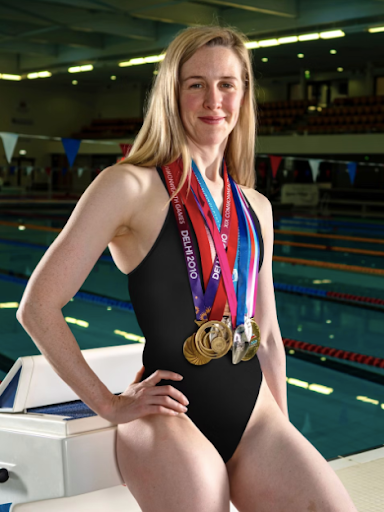
The first time I tried WUKA period pants, I couldn’t believe how comfortable they were. No rustling, no movement, and no fear of leaks. I actually forgot I was wearing them!
And their period swimwear? Game changer. No more worrying about climbing out of the pool and noticing blood running down my leg just confidence and freedom.
I can’t help but think how different my experience as a teenager could have been if products like this had existed then.
They would’ve given me comfort, reassurance, and a sense that my period wasn’t something to hide or fear.
That’s why I’m so passionate about opening up conversations around periods in sport.
For so many young athletes, missing training isn’t an option, but competing while bleeding can be stressful and distracting.
Period-proof swimwear can take away that anxiety — letting you focus on your performance, not your period.
What I’ve Learned
My journey has taught me that periods aren’t a “problem” to be fixed, they’re a natural, powerful part of who we are.
With the right knowledge, support, and tools, we can work with our bodies, not against them.
Period proof swimwear might seem like a small thing, but for a young swimmer, it can mean the world. It can mean the difference between fear and freedom, between shame and Confidence.
Periods are not the enemy of performance.
Ignoring them is.
Find out more about Wuka at wuka.co.uk
-

 News3 weeks ago
News3 weeks agoDozens of women report suffering painful burns after using Always sanitary towels
-
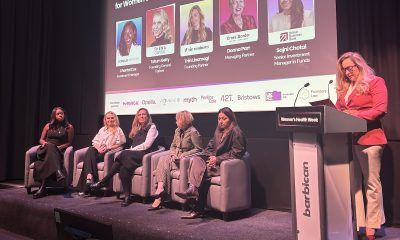
 Wellness4 weeks ago
Wellness4 weeks agoCutting through the noise in femtech – key takeaways from Women’s Health Week 2025
-

 Fertility3 weeks ago
Fertility3 weeks agoAI embryo selection tool wins European approval
-

 News6 days ago
News6 days agoOpinion: Not ‘just stress’ – How hormonal changes affect women’s brain function
-
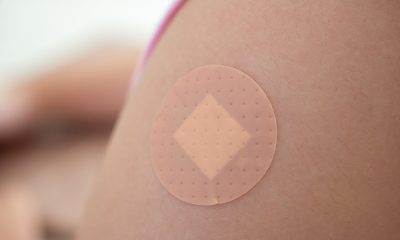
 News3 weeks ago
News3 weeks agoTestosterone patch shows promise for menopausal women
-

 News4 weeks ago
News4 weeks agoScientists develop breakthrough approach to detecting endometriosis in menstrual blood
-

 Wellness3 weeks ago
Wellness3 weeks agoFrom SEO to GEO: How women’s health brands can get found in the age of AI
-
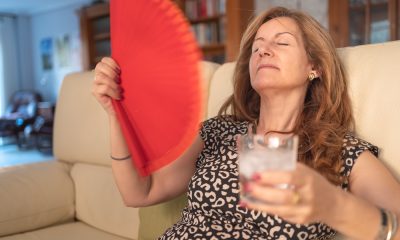
 News3 weeks ago
News3 weeks agoFDA approves new menopause drug to treat hot flashes and night sweats




